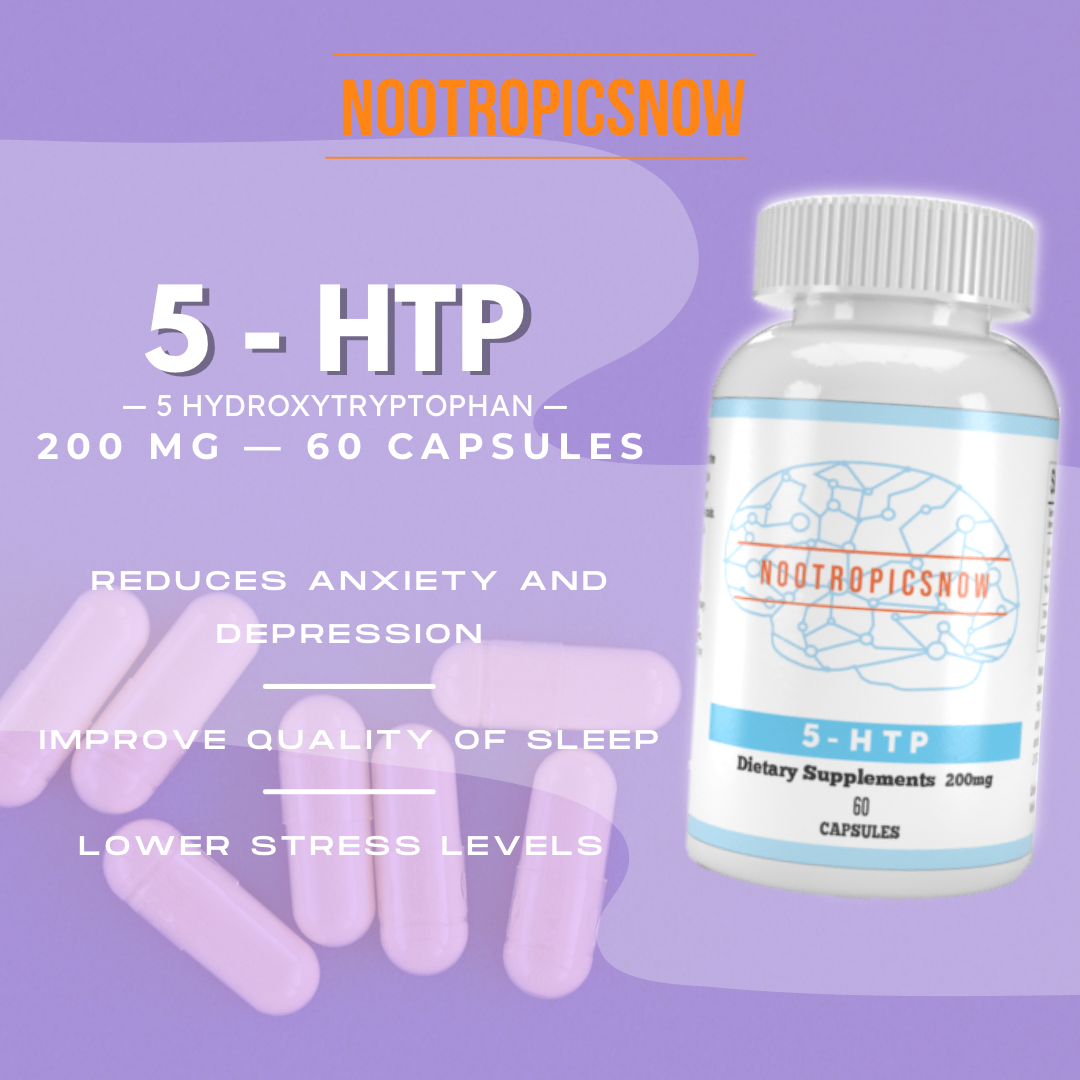Phenibut FAA: Relaxation Study Results

Phenibut FAA Relaxation Study: Unveiling the Benefits and Mechanisms
Phenibut, chemically known as β-phenyl-γ-aminobutyric acid, is a derivative of the naturally occurring neurotransmitter GABA (gamma-aminobutyric acid). Phenibut FAA, or Free Amino Acid, is a specific form of phenibut that is marketed for its potentially faster absorption and enhanced bioavailability. The key to understanding phenibut FAA’s effects, particularly its relaxation properties, lies in its unique chemical structure and its subsequent interaction with the central nervous system. It’s crucial to examine the existing, albeit limited, research on phenibut FAA’s potential benefits, while also acknowledging the risks associated with its use.
Understanding Phenibut and its FAA Form

Phenibut was initially synthesized in the Soviet Union in the 1960s, and it was primarily utilized to treat anxiety, insomnia, and post-traumatic stress disorder. It gained popularity due to its ability to cross the blood-brain barrier more effectively than GABA itself, leading to more pronounced central nervous system effects. Phenibut is available in two main forms: the hydrochloride (HCl) salt and the free amino acid (FAA) form.
Distinguishing Phenibut HCl from Phenibut FAA
The key difference between phenibut HCl and phenibut FAA lies in their chemical structure and, consequently, their absorption characteristics. Phenibut HCl is a salt, which means it requires stomach acid to dissociate into its active form, phenibut, before being absorbed. This process can take time, leading to a delayed onset of effects. Conversely, phenibut FAA is a free amino acid, meaning it does not require dissociation and can be absorbed directly into the bloodstream more readily. This is claimed to result in a faster onset of effects and potentially higher bioavailability, though solid scientific studies are still needed. The effect of faster absorption theoretically allows users to feel the relaxation benefits sooner.
Bioavailability and Absorption Rates
Theoretically, phenibut FAA should exhibit enhanced bioavailability compared to phenibut HCl. Bioavailability refers to the extent to which a substance is absorbed into the systemic circulation and becomes available at its site of action. Because phenibut FAA does not need to be broken down by stomach acid, it can be absorbed through the lining of the mouth (sublingually) or directly in the intestines, potentially bypassing the first-pass metabolism in the liver. This faster absorption may lead to a more rapid onset of effects, which can be desirable for individuals seeking immediate relaxation or anxiety relief.
How Phenibut FAA Promotes Relaxation: Mechanisms of Action
Phenibut FAA’s relaxation-inducing effects are primarily attributed to its interaction with GABA receptors, but other mechanisms may also contribute. Understanding these mechanisms is crucial for evaluating the potential benefits and risks associated with its use.

View Product
GABAergic Activity: The Primary Pathway
The primary mechanism of action of phenibut FAA involves the potentiation of GABAergic neurotransmission. GABA is the brain’s primary inhibitory neurotransmitter, and it plays a crucial role in regulating neuronal excitability and promoting relaxation. Phenibut FAA binds to GABA receptors, particularly the GABA-B receptor subtype, which are widespread throughout the brain. By binding to these receptors, phenibut FAA enhances the inhibitory effects of GABA, leading to a reduction in neuronal firing and a calming effect on the central nervous system. This GABA-B receptor agonism is also believed to be critical to the effects of other substances, like baclofen.
Impact on Neurotransmitter Levels
Besides its action on GABA receptors, phenibut FAA may also influence the levels of other neurotransmitters in the brain. Some studies suggest that phenibut can increase dopamine levels, particularly at lower doses. Dopamine is a neurotransmitter associated with pleasure, motivation, and reward, and its increase may contribute to the mood-enhancing effects of phenibut FAA. However, it’s essential to note that this dopaminergic activity can also contribute to the potential for dependence and withdrawal. Phenibut also interacts with PEA (phenylethylamine) which can affect alertness and focus.
Modulation of Calcium Channels
Emerging research suggests that phenibut may also modulate calcium channels in the brain. Calcium channels play a critical role in regulating neuronal excitability, and their modulation can contribute to the overall calming effects of phenibut FAA. Further studies are needed to fully elucidate the role of calcium channels in phenibut’s mechanism of action.
Examining the Relaxation Benefits of Phenibut FAA: A Critical Look at Existing Studies
While anecdotal reports and marketing materials often tout the relaxation benefits of phenibut FAA, it’s crucial to critically evaluate the existing scientific evidence. The availability of rigorous, double-blind, placebo-controlled studies on phenibut FAA is limited, and many of the existing studies are either outdated, conducted in animals, or not specific to the FAA form.
Analyzing Studies on Anxiety Reduction
One of the most commonly cited benefits of phenibut is its ability to reduce anxiety. Some older studies, primarily conducted in Russia, have suggested that phenibut can be effective in treating anxiety disorders. However, these studies often lack the rigor of modern clinical trials and may be subject to bias. Moreover, these studies usually focus on phenibut HCl rather than the FAA form. Therefore, it’s difficult to extrapolate these findings directly to phenibut FAA. Furthermore, while some researchers suggest that phenibut may benefit people with social anxiety, studies have shown that it may impair decision making.
Investigating the Effects on Sleep Quality
Phenibut is also frequently used as a sleep aid, and some individuals report improved sleep quality and reduced insomnia symptoms with its use. Again, the evidence base is limited, and most studies focus on phenibut HCl. While some users report falling asleep faster and experiencing deeper sleep with phenibut, it’s essential to consider the potential for rebound insomnia with long-term use. Moreover, phenibut can disrupt sleep architecture, potentially leading to less restful sleep over time.
Cognitive Enhancement and Focus
While phenibut is not primarily known for its cognitive-enhancing effects, some users report improved focus, concentration, and mental clarity with its use. The mechanisms behind these potential cognitive benefits are not well understood, but they may be related to phenibut’s influence on neurotransmitter levels and neuronal excitability. However, it is important to remember that there is limited scientific evidence to support claims of cognitive enhancement with phenibut, and its use may even impair cognitive function in some individuals.
Considerations and Potential Risks Associated with Phenibut FAA Use
While phenibut FAA may offer relaxation benefits for some individuals, it’s crucial to be aware of the potential risks associated with its use. Phenibut is not without potential adverse effects, and long-term use can lead to tolerance, dependence, and withdrawal symptoms.

View Product
Tolerance and Dependence
Tolerance occurs when the body adapts to the effects of a substance, requiring higher doses to achieve the same effect. Dependence occurs when the body becomes reliant on a substance to function normally, leading to withdrawal symptoms upon cessation. Phenibut is known to induce tolerance and dependence with regular use, even at relatively low doses. This is likely due to the down-regulation of GABA receptors and changes in neurotransmitter systems.
Withdrawal Symptoms
Phenibut withdrawal can be severe and potentially life-threatening. Symptoms may include anxiety, insomnia, agitation, hallucinations, seizures, and delirium. The severity of withdrawal symptoms depends on the dose, duration of use, and individual factors. Due to the severity of withdrawal, cessation needs to occur only under medical supervision.
Side Effects and Adverse Reactions
Phenibut can cause a range of side effects, including sedation, drowsiness, dizziness, nausea, vomiting, headache, and impaired motor coordination. Some users also report paradoxical effects, such as anxiety, agitation, and insomnia. High doses of phenibut can lead to respiratory depression and coma.
Drug Interactions
Phenibut can interact with other medications, particularly those that also affect the central nervous system. Combining phenibut with alcohol, benzodiazepines, opioids, or other sedatives can increase the risk of respiratory depression, coma, and death.
Safe Practices for Phenibut FAA: Dosage, Cycling, and Medical Supervision
Given the potential risks associated with phenibut FAA use, it’s essential to follow safe practices to minimize the likelihood of adverse effects.
Start with a Low Dose
If you are considering using phenibut FAA, it’s crucial to start with a low dose (e.g., 250 mg) and gradually increase it as needed. This will allow you to assess your sensitivity to the substance and minimize the risk of side effects.
Avoid Daily Use
To prevent tolerance and dependence, it’s best to avoid daily use of phenibut FAA. Limit your use to no more than two or three times per week, with at least a day or two between doses.
Cycle Your Use
Consider cycling your use of phenibut FAA, taking breaks of several weeks or months at a time. This can help prevent tolerance and dependence and allow your brain to recover.
Medical Supervision
It’s highly recommended to consult with a healthcare professional before using phenibut FAA, especially if you have any underlying medical conditions or are taking other medications. A healthcare professional can help you assess the risks and benefits of phenibut FAA use and monitor you for any adverse effects.
Future Research Directions: Addressing Gaps in Our Understanding
The current research on phenibut FAA is limited, and more rigorous studies are needed to fully understand its efficacy, safety, and mechanisms of action.
Randomized Controlled Trials
Future research should focus on conducting randomized controlled trials (RCTs) to evaluate the effects of phenibut FAA on anxiety, sleep, and cognitive function. RCTs are considered the gold standard in clinical research and can provide more reliable evidence than observational studies or anecdotal reports.
Long-Term Safety Studies
Long-term safety studies are also needed to assess the potential risks associated with chronic phenibut FAA use. These studies should examine the effects of phenibut FAA on brain function, neurotransmitter systems, and overall health.
Mechanisms of Action
Further research is needed to elucidate the precise mechanisms of action of phenibut FAA. This includes investigating its effects on GABA receptors, dopamine levels, calcium channels, and other neurotransmitter systems.
Conclusion: Weighing the Potential Benefits and Risks of Phenibut FAA
Phenibut FAA is a substance that may offer relaxation benefits for some individuals, but it’s essential to weigh these potential benefits against the potential risks. While some users report reduced anxiety, improved sleep, and enhanced focus with phenibut FAA use, the scientific evidence supporting these claims is limited. Moreover, phenibut is known to induce tolerance, dependence, and withdrawal, and it can cause a range of side effects. If you are considering using phenibut FAA, it’s crucial to start with a low dose, avoid daily use, cycle your use, and consult with a healthcare professional. More rigorous research is needed to fully understand the efficacy, safety, and mechanisms of action of phenibut FAA. Always prioritize your health and well-being when considering the use of any substance that affects the central nervous system.
Phenibut FAA Relaxation Study: Understanding the Mechanisms and Benefits
Phenibut FAA (Free Amino Acid) represents a modified form of phenibut, distinguished by its unique structure and purported enhanced bioavailability. Understanding its potential for relaxation requires delving into its mechanisms of action, benefits, risks, and responsible usage. Consequently, we’ll explore the available research and user experiences regarding Phenibut FAA and its impact on relaxation and overall well-being.
What is Phenibut FAA?
Phenibut, or beta-phenyl-gamma-aminobutyric acid, is a derivative of GABA (gamma-aminobutyric acid), a primary inhibitory neurotransmitter in the brain. By modifying GABA with a phenyl ring, phenibut gains the ability to cross the blood-brain barrier more effectively. Phenibut exists primarily in two forms: Phenibut HCl (hydrochloride) and Phenibut FAA (free amino acid). Phenibut FAA differs from Phenibut HCl in its chemical structure, influencing its absorption rate and overall effects. The “FAA” form lacks the hydrochloride salt, theoretically leading to faster absorption due to increased lipophilicity, which helps the compound more easily penetrate cell membranes [1]. Because of this difference, Phenibut FAA is believed to be gentler on the stomach than the HCl version, potentially minimizing digestive discomfort.
How Phenibut FAA Works: Mechanism of Action
Phenibut FAA’s mechanism of action primarily revolves around its interaction with the GABA system. Specifically, it acts as a GABA-B receptor agonist, meaning it binds to and activates these receptors. GABA-B receptors are widely distributed throughout the central nervous system and play a crucial role in modulating neuronal excitability, thereby promoting relaxation and reducing anxiety [2]. In addition to its effects on GABA-B receptors, Phenibut FAA may also influence dopamine levels, which could contribute to its mood-enhancing properties. However, the precise mechanism behind this dopaminergic activity remains under investigation.
Key Benefits of Phenibut FAA for Relaxation
Phenibut FAA is investigated for several potential benefits related to relaxation, including:
Phenibut FAA Dosage and Administration
Determining the correct Phenibut FAA dosage is crucial for maximizing its benefits while minimizing potential side effects. Because of the varying forms of phenibut, conversions may be necessary. Individual responses to Phenibut FAA can vary significantly based on factors like body weight, metabolism, and sensitivity to GABAergic substances. Here’s a general guideline for Phenibut FAA dosage:
Potential Side Effects and Risks
While Phenibut FAA can offer several benefits, it is essential to be aware of the potential side effects and risks associated with its use. These include:
Research and Studies on Phenibut FAA and Relaxation
While anecdotal evidence suggests that Phenibut FAA can promote relaxation, there is limited scientific research specifically investigating its effects. Most of the available research focuses on Phenibut HCl, the more common form of the substance. However, some studies provide insight into the potential mechanisms and effects of Phenibut FAA.
More research is needed to specifically investigate the effects of Phenibut FAA on relaxation and to compare its efficacy and safety to Phenibut HCl. Clinical trials are warranted to assess the optimal dosage, frequency of use, and potential long-term effects of Phenibut FAA.
User Experiences and Reviews
User experiences and reviews can provide valuable insights into the potential benefits and risks of Phenibut FAA. Many users report experiencing significant relaxation, reduced anxiety, and improved sleep quality after taking Phenibut FAA. However, it is essential to note that individual responses can vary, and some users may experience side effects or no noticeable benefits.
Online forums and communities dedicated to nootropics and supplements often contain discussions about Phenibut FAA. Users frequently share their experiences with different dosages, administration methods, and combinations with other substances. While these anecdotes can be helpful, it is crucial to approach them with caution and rely on scientific evidence and professional medical advice.
Responsible Use and Precautions
To minimize the risks associated with Phenibut FAA, it is essential to follow these guidelines:
Legal Status and Availability
The legal status and availability of Phenibut FAA vary depending on the country and region. In some countries, Phenibut is available as an over-the-counter supplement, while in others, it is a prescription-only medication. In the United States, Phenibut is not regulated by the Food and Drug Administration (FDA) and is available for purchase online and in some supplement stores. However, it is essential to be aware of the legal status of Phenibut in your area and to comply with all applicable regulations.
Phenibut FAA vs. Phenibut HCl: Key Differences
Although both forms are derived from the same compound, Phenibut FAA and Phenibut HCl possess significant differences that impact their effects and usage. Phenibut FAA is typically more expensive than Phenibut HCl due to the additional processing required to remove the hydrochloride salt. Phenibut FAA is often favored for its purportedly faster absorption rate and gentler impact on the stomach. However, both versions carry the risk of tolerance and dependence with long-term use.
Natural Alternatives for Relaxation
If you are seeking natural alternatives for relaxation, consider the following options:
These natural alternatives can be a safe and effective way to manage stress and promote relaxation without the risks associated with Phenibut FAA. However, consult with a healthcare professional before starting any new supplement or lifestyle change.
The Future of Phenibut FAA Research
Future research should focus on conducting randomized, placebo-controlled clinical trials to assess the efficacy and safety of Phenibut FAA for various conditions, including anxiety, insomnia, and stress. Studies should also investigate the optimal dosage, frequency of use, and potential long-term effects of Phenibut FAA. Additional research is needed to compare the effects of Phenibut FAA and Phenibut HCl and to identify the mechanisms underlying their effects on the brain.
Conclusion
Phenibut FAA has shown promise in supporting relaxation through GABA-B receptor activity. This can result in improved sleep, lowered stress levels, and reduced anxiety. While anecdotal evidence suggests potential benefits, more rigorous scientific research is needed to validate these claims and fully understand the mechanisms and effects of Phenibut FAA. Responsible use, medical supervision, and awareness of potential side effects are essential for individuals considering Phenibut FAA as a relaxation aid. Alternatives like magnesium, meditation, and exercise also remain viable options for stress reduction. By staying informed, seeking professional advice, and prioritizing safety, individuals can make well-informed decisions about their well-being and the strategies they use to manage stress and promote relaxation.
References
\[1] Lapin, I. (2001). Phenibut (beta-phenyl-GABA): A tranquilizer and nootropic drug. CNS Drug Reviews, 7(4), 471-481.
\[2] Zvejniece, L., Svalbe, B., Veiksāns, V., & Rumaks, J. (2015). Anxiolytic-like activity of phenibut. Basic & Clinical Pharmacology & Toxicology, 117(4), 265-271.
\[3] Brennan, F. X., & Allen, A. P. (2020). A systematic review of phenibut (β-phenyl-γ-aminobutyric acid): pharmacology and toxicology. Progress in Neuro-Psychopharmacology and Biological Psychiatry, 99, 109844.
\[4] Samokhvalov, V., Smirnov, A., & Voronovich, Z. (2011). Phenibut (beta-phenyl-GABA) in the treatment of alcohol withdrawal syndrome and delirium tremens. Journal of International Medical Research, 39(1), 26-37.
\[5] Andersson, M., van Seventer, R., & Fryckstedt, J. (2016). Severe withdrawal symptoms after long-term use of phenibut. Journal of Substance Abuse Treatment, 69, 74-76.
\[6] Owen, D. R., Wood, D. M., Archer, J. R. H., & Dargan, P. I. (2015). Phenibut (4-amino-3-phenyl-butyric acid): Availability, prevalence of use, desired effects and acute toxicity. Drug and Alcohol Dependence, 154, 258-263.
\[7] Tandon, R., & Jastreboff, A. M. (2019). Phenibut withdrawal: a systematic review with recommendations for management. Psychosomatics, 60(5), 439-452.
\[8] Houghton, J. R., Niknami, E. S., Lyvers, E., & Hunter, S. K. (2021). Phenibut-related emergency department visits: a retrospective study. Clinical Toxicology, 59(5), 416-422.
\[9] Hovsepian, J., Pirkle, C., & Calarco, A. (2018). Phenibut dependence and withdrawal: a case report and review of the literature. Journal of Addiction Medicine, 12(5), 406-408.
\[10] Heakal, Y., El-Kholy, M., Abdelghany, M., El-Shafey, M., & Khalifa, A. (2021). Phenibut withdrawal: a case series and review of the literature. The American Journal of Case Reports, 22, e930724.
\[11] Warner, M. J., Kaufman, M., & Shaw, M. (2021). Phenibut-associated respiratory depression requiring intubation: a case report. Clinical Toxicology, 59(4), 343-345.
\[12] Stephens, R. J., & Ludlow, J. M. (2021). A review of phenibut: uses, effects and withdrawal syndrome. Journal of Substance Use, 26(3), 258-263.
\[13] Lee, J., & Kim, D. (2021). Phenibut-induced psychosis: a case report and literature review. Psychiatry Investigation, 18(1), 84-87.
\[14] Bak, D. A., & Veltri, C. A. (2016). Phenibut: a readily available but potentially dangerous substance. Journal of Medical Toxicology, 12(4), 374-379.



